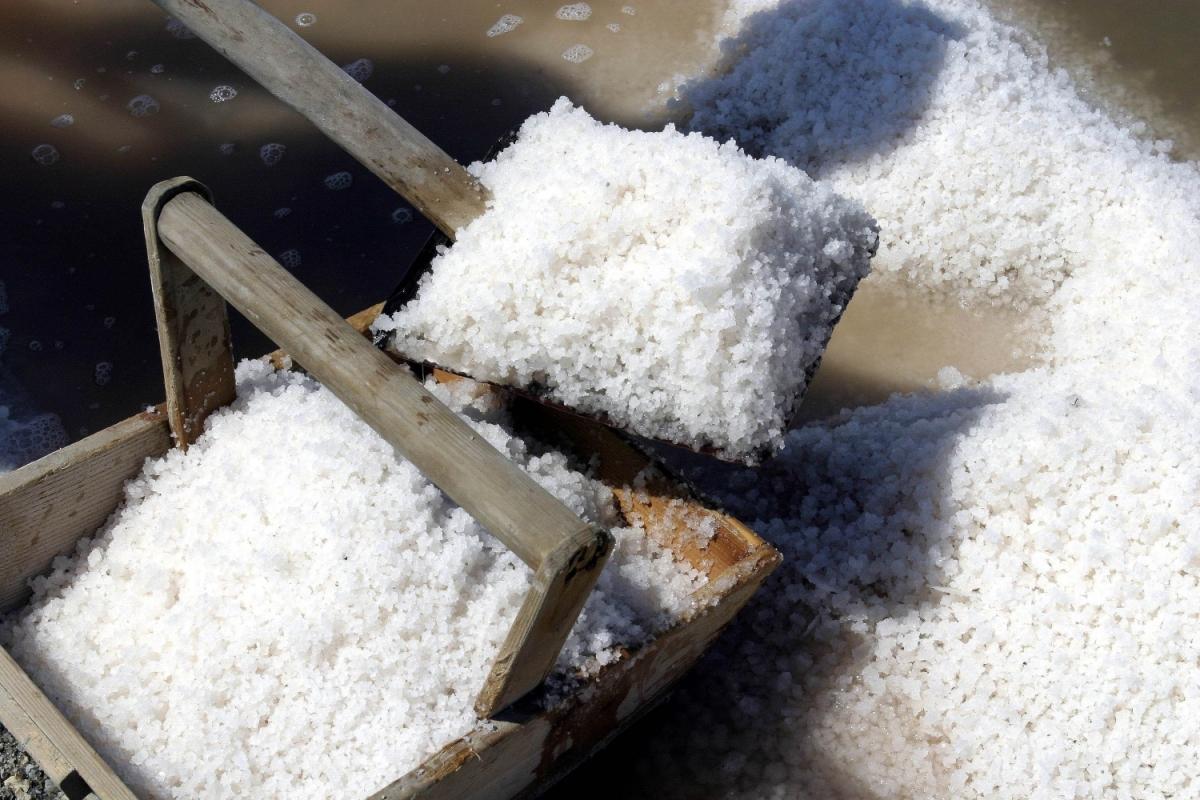SLOW FOOD PRESIDIA
SALE MARINO ARTIGIANALE DI CERVIA (ARTISANAL SEA SALT FROM CERVIA)
The origins of the Cervia saltworks date back to ancient times; some scholars link them to the Etruscans, others to the Greeks, as the old name for Cervia was Ficocle, clearly of Greek origin. As far back as Roman times, salt production in this area was abundant and a source of rich trade. In the Middle Ages, salt from Cervia became fundamental to the economy of the entire Romagna region, so much so that in 1698 the ancient village of Cervia had to be moved and rebuilt from scratch two kilometres away to make room for the salt extraction basins. The Magazzini del Sale (Salt Warehouses), the Torre di San Michele (St. Michael's Tower) and the houses of the salt miners in the old town centre bear witness to how important salt was for the entire town of Cervia.
The "Camillone" saltworks is the only survivor of the 150 or so multi-collection saltworks that were made obsolete with the advent of industrial processing in 1959. Harvesting took place on a daily basis: each salt worker divided the last collection basin into five small sectors. Every day, the contents of one sector were collected and in five days all the salt in that sector was used up, then the next sector was harvested. In this way, there was no formation of the more "bitter" salts, such as potassium and magnesium chlorides, which take longer to crystallise, and this is why the "Camillone" saltworks is famous for its "Sweet Cervia salt". The saltworks are still operational, thanks to the voluntary work of the "Gruppo Culturale Civiltà Salinara" (Salt Workers' Cultural Group), it produces around 1000 quintals of extremely high-quality salt every year. Harvesting takes place from June to September, in optimal conditions twice a week. Due to its naturalistic and landscape value, the salt works are recognised as a wetland of international importance and is part of the Emilia-Romagna Po Delta Regional Park.
ANGUILLA MARINATA DELLE VALLI DI COMACCHIO (MARINATED EEL FROM THE COMACCHIO VALLEYS)
The Comacchio Valleys are a wetland area of great ecological importance, but also a unique example of integration between the natural environment and human activity. In fact, since time immemorial, many valuable fish species have been extensively fished and farmed here: eels, sea bass, valley shrimps, etc. The eel in particular is one of the most important species. Above all, the eel has been the protagonist of the economic development of the Comacchio valleys. This snake-like fish, which originates in the Sargasso Sea, completes its life cycle (7-10 years) in the inland waters of the brackish water lagoon of the "valleys", until it makes the long journey back to the ocean to reproduce when it is sexually mature. It is at this time that the meat becomes particularly tasty and is therefore caught. The "lavorieri" are used, which are weirs positioned near the openings to the sea in the valleys and in the inland canals, designed to catch the adult fish at the time of their migration, while allowing new specimens to enter the valley.
Eels can be eaten fresh, although this product has become famous for its vinegar marinade, as the period of greatest concentration of the catch is during the autumn fishing season (mainly from the end of October to January), which means they can be preserved and distributed worldwide. The presence in the Po Delta of eel marinating factories dates back centuries. The Emilia Romagna Po Delta Park, in collaboration with the Municipality of Comacchio, has completed the renovation of the ancient Sala dei Fuochi of the Manifattura dei Marinati, which was the most important centre for this process in the Comacchio area, and now processes eels using the most authentic traditional technique. The eels are placed on long skewers and cooked in roasters, in front of the wood-fuelled fires in large fireplaces. The secret lies in the cooking and the quality of the raw material. The classic recipe for brine is to add about 70 grams of Cervia sea salt and a glass of water to each litre of white wine vinegar and then add a bay leaf. The eel, processed in this way, maintains its organoleptic characteristics for several months; in fact, it was once eaten at Easter.



